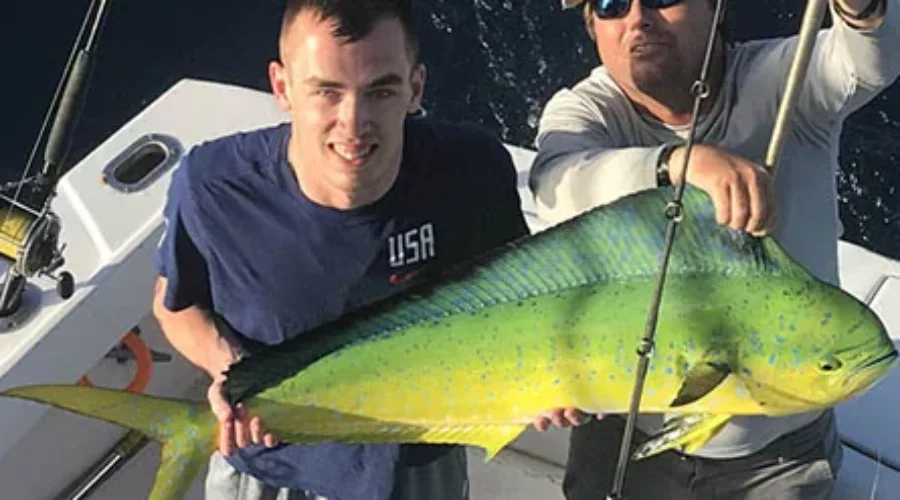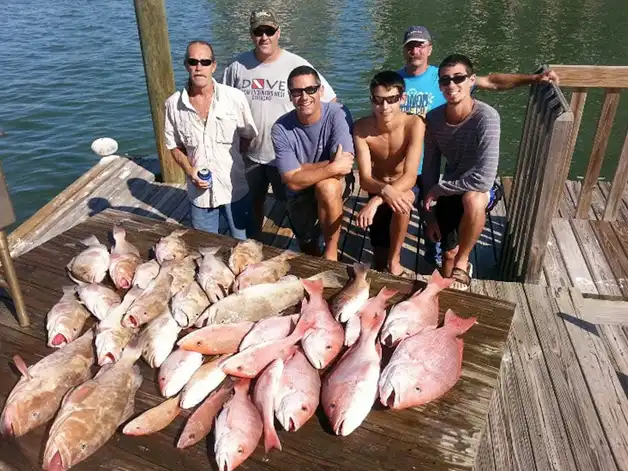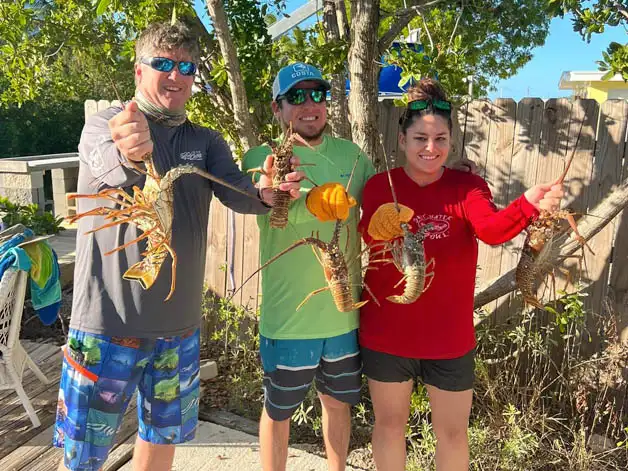The Best Mahi Mahi Fishing Spots in South Florida
Mahi Mahi, also known as Dolphin Fish and Dorado in other parts of the world, are among the most popular sportfish in South Florida and the world. Mahi Mahi are very quick to mature, being the fastest growing fish in the world, and they can get rather big. Some Bulls, the males, can weigh 100+ pounds; the largest on record was 87 pounds in Costa Rica. They are one of the fastest fish, with speeds clocked just shy of 60 mph. They are also one of the most delicious fish caught in South Florida. Because of this, you will find Mahi-Mahi as table fare in many restaurants up and down the coast. For all these reasons, Dolphin Fish, not “Flipper,” are one of the most desired fish in the world.
The Gulfstream
You can find Mahi-Mahi and other pelagic sportfish in the Gulf Stream, a strong ocean current that brings warm water up from the Gulf of Mexico to the Atlantic Coast. Mahi-Mahi like warm water, 75 degrees and up, and a strong current. The Gulf Stream has an average velocity of 4 mph, goes north, crossing the ocean to get to Europe, and brings warm water from the Gulf of Mexico and the Caribbean.
The Gulf Stream distance from land varies daily, but on average, it is around 10 – 20 miles off the coast of Southern Florida. The closest fishing city to it in Florida tends to be Palm Beach, with a distance of only 5 miles, but on any day, it could be only a mile off the coast of anywhere in Florida depending on wind, the tides and other factors.
The powerful hurricanes and tropical storms that have been hitting the Caribbean and South Florida have resulted in changes in the Gulf Stream and shifts in fish migration.
Best Destinations in South Florida to Catch Mahi Mahi.
The Florida Keys
The Florida Keys are undoubtedly one of the best places for Mahi-Mahi fishing all year long. If reeling in a big Bull Mahi-Mahi is on your bucket list, then The Florida Keys is a great place to tick it off your list. I will break the Florida Keys into the main sections of the Keys: Key Largo, Islamorada, Marathon, and Key West. Each has similar but different seasons for Mahi-Mahi.
Key West
There is no poor time to visit Key West to fish for Mahi-Mahi, but the best time to come down to the southernmost point in the US is April to June. There is still excellent fishing from late summer to the middle of fall and in March and good fishing in the winter months of November to February.
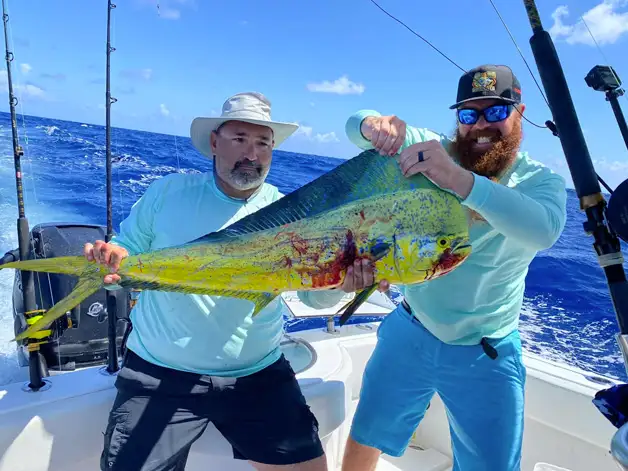
Marathon
Just north of Key West is Marathon, 13 islands that are surrounded by barrier reefs. The Gulf Stream is usually within 10 miles from shore, especially in the summer months, making for excellent Mahi-Mahi fishing conditions from April to June. But you still get very good fishing in March, July and October and good results the rest of the year. Located offshore in the Gulfstream is the “Marathon Hump,” a natural structure rising from 480 to 1,100 feet, creating an up-current that traps baitfish and attracts Mahi-Mahi and other trophy fish.
Islamorada
Known as the Sportfishing Capital of the World, Islamorada is well known for its Mahi-Mahi bite. The Gulf Stream is never more than 20 miles offshore, bringing excellent fishing from May to August. The worst time is winter, from November to February, but there are still good to very good conditions for the rest of the year. Islamorada, like Marathon, has a natural structure, “The Hump,” that attracts big trophy fish like Mahi-Mahi.
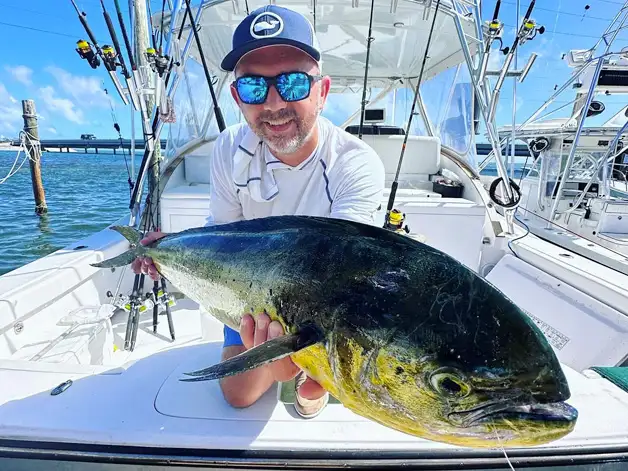
Key Largo
The Gulf Stream tends to come closest to the shore in this northern part of the Florida Keys. Because of this, there is not a bad time to visit, and April to August is the best time to come to Key Largo.
Key Biscayne
Located just north of Key Largo and just south of Miami, Key Biscayne boasts some of the best fishing around. The Mahi-Mahi bite is excellent from April to September, and the action is still hot for the rest of the year.

Miami
Miami has truly magical Mahi-Mahi fishing year-round, but from mid-spring to the beginning of fall is when the bite is the best. For most of the rest of the year, there is still great fishing, but December and January, the winter, do not have the best conditions.
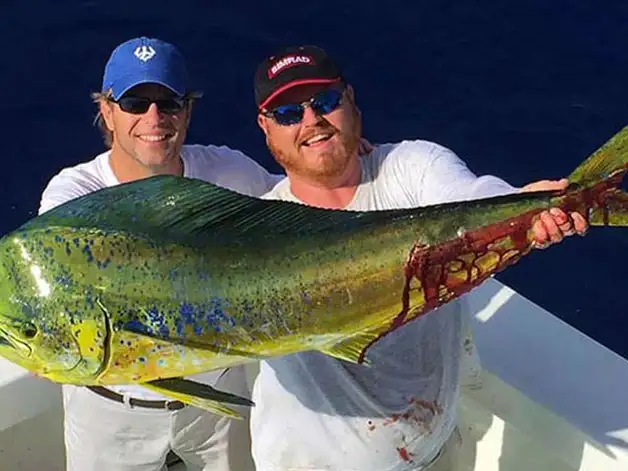
Ft. Lauderdale
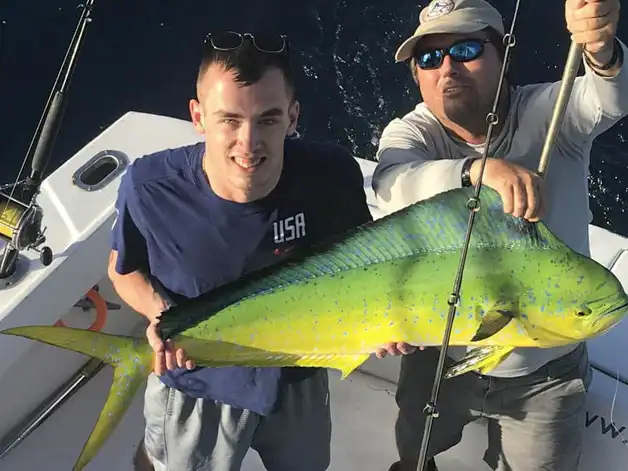
Palm Beach
Stuart
What to Look for When Fishing for Mahi Mahi in South Florida
Currents and Temperature Changes
Under Sea Birds
Weed Lines
Other Structures
Most Common Fishing Techniques Used for Catching Mahi Mahi in South Florida.
Trolling
Lures to add bait to:
Lures that do not need bait
Drifting
Drifting is another method used to catch Mahi-Mahi. This is an excellent method for a few reasons. First, it saves on fuel which these days are a big thing. Second, along with the structures, the Mahi-Mahi will head to the bottom of the boat, making them easier to find and catch.
Drifting near either weed lines or structures is a great alternative to trolling. Squid is a great choice when drifting, as are other live bait. You can chum the water or leave a hooked fish in the water behind the boat. Both will attract the fish. If you do get a Mahi-Mahi to bite, reel it to the boat but do not bring it to the boat. The caught Mahi-Mahi will lure others out, and you might be in for a feeding frenzy. If that does not work, pull the Mahi-Mahi in for pictures and a great meal that night.
Jigging
You can catch Mahi-Mahi even if you stand still anchored to the bottom. Jigging is another excellent way to fish near seaweed or other structures. Drop your line 30-50 feet down. This may get the Mahi-Mahi to gulp your bait, or you might hook it into a Jack or other smaller fish and this is perfect because the Mahi-Mahi will definitely be attracted to a fish in distress.
Again, chumming the water or keeping a hooked fish in the water will attract the fish, just like drifting if you hook up with a fish and leave it in the water to see if it will attract more.
Kite Fishing
Whether drifting or trolling, another technique used is kite fishing. This can be very productive and fun. Who doesn’t love flying a kite? The bait on the surface thrashing attracts Mahi-Mahi, and putting a chum bag in will also attract them. This is a great way to spend the day out on the water.

